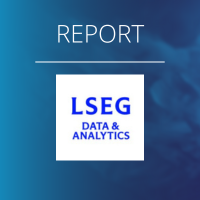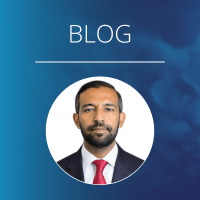In the dynamic world of corporate finance, treasurers are continuously refining their strategies to ensure organisations remain financially stable and agile.
From the decision to opt for fixed or floating interest rates to the choice between secured and unsecured debt, these financial leaders must navigate a complex landscape filled with opportunities and risks.
Diverse strategies in play
Nissan Motors Limited, a Japanese multinational automobile manufacturer, employs funding strategies aligned with its business needs, particularly in its sales finance division. Managing assets of $38 billion, the company primarily utilises asset-backed securitizations (ABS) and asset-backed commercial papers (ABCP) to finance car loans and leases. “We tend to go more secure and decrease the unsecured part of the business to manage costs and risks effectively,” said Victor Pausin, treasurer – Americas. This strategy not only minimises interest expenses but also strengthens the company’s balance sheet against market fluctuations.
Signature Aviation, a multinational aviation services company, is funded through a combination of fixed and floating debt. According to Patrick Baumann, VP treasurer, different approaches to capital structure are adopted by companies depending on factors such as liquidity, leverage, cash flow generation capability, and industry.
“Some companies may choose to build bond ladders with fixed maturities ranging from two to over 20 years, to align the balance sheet and cash flows. Similarly to many companies, we manage the interest rate risk by a combination of fixed rate debt and interest rate swaps, in accordance with our policies and procedures,” Baumann added.
It was noted by Baumann that converting floating rates to fixed rates using swaps could enhance stability in volatile markets, such as during the increasing rate environment experienced in 2022 and 2023.
Navigating economic volatility
The global economic landscape is rife with uncertainties, from fluctuating interest rates to political pressures. Baumann reflects on the discrepancies in market expectations regarding Federal Reserve rate cuts, noting the challenges in predicting short-term interest rate movements. He advised treasurers to be proactive, leveraging favourable market conditions to refinance debt or extend maturities. “You need to assess the probability of having a better market twelve months from now and apply filters to your timing strategy,” he added.
Additionally, maintaining strong banking relationships and being prepared to tap the market quickly if conditions deteriorate are crucial. “If the market is good, take advantage of it,” said Baumann. He emphasises the necessity of considering various factors, such as market volatility, business attractiveness, and external events like cybersecurity threats or geopolitical crises, which can significantly impact a company’s funding strategy.
Private equity considerations and banking relationships
Private equity-backed firms often take advantage of market conditions to reprice debt and enhance efficiency. Baumann noted, “Private equity shareholders are very active in our business. They leverage their relationships with top banks and financial institutions to access the best financing terms.” This approach allows private equity-backed companies to optimise their capital structure, leveraging debt for acquisitions, working capital, or capital expenditures.
Maintaining a robust dividend policy is also important. Baumann uses the analogy, “Sometimes, a bird in the hand is worth two in the bush,” suggesting that taking advantage of favourable current market conditions is often better than waiting for potentially better future opportunities. This strategy helps companies manage their cash flow and maintain financial stability, even in volatile markets.
A critical aspect of any funding strategy is managing and diversifying banking relationships. Nissan maintains a large group of banking partners, seeking capabilities and diversification. Pausin emphasised, “We have a large bank group and look for capabilities and diversification.”
The role of technology and innovation
In today’s digital age, technology and innovation play a crucial role in shaping funding strategies. Companies increasingly leverage advanced financial technologies to enhance their risk management practices, streamline operations, and improve decision-making processes. Baumann highlighted the integration of technology in managing cash flow, foreign exchange, and interest rate swaps. “We use sophisticated financial tools to monitor market trends and optimise our funding strategies,” he added.
Corporate treasurers have leveraged technology to more accurately predict market trends, assess risks, and make informed decisions. This technological advantage enables companies to respond swiftly to market fluctuations, thereby strengthening their financial resilience.
Future outlook and strategic planning
As the economic landscape continues to evolve, corporate treasurers must remain vigilant and adaptive. “You need to stay ahead of market trends, continuously assess your funding strategies, and be ready to adjust your approach based on changing economic conditions,” advised Baumann. This proactive stance is essential for maintaining financial stability and capitalising on opportunities in a rapidly changing environment.
The role of corporate treasurers is more critical than ever in today’s uncertain economic environment. By leveraging diverse funding strategies, maintaining strong banking relationships, embracing technology, and staying ahead of market trends, these financial leaders are navigating the complexities of the financial world with confidence and foresight. As they continue to adapt and innovate, their strategies will play a pivotal role in ensuring their companies’ long-term success and sustainability.












